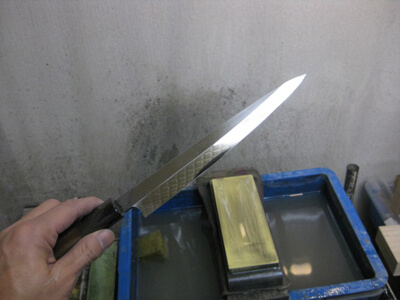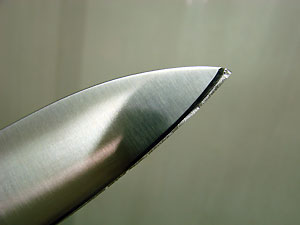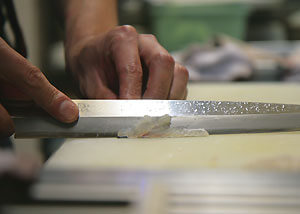The Art of Slow Sharpening

Today, I adjusted the micro bevel on about 70 household knives. Even though these are household knives, they’re of a pretty high standard. With a bit more work, they could almost be transformed into professional-grade knives.
When I sharpened them, I took my time when setting the final micro bevel. Instead of the usual “swish, swish” sound you’d expect, it was more of a “grrr, grrr” as I pressed the edge into the stone. It felt like I was imprinting the stone’s grit pattern onto the edge.
While it might seem like moving faster would speed up the process, I found that taking it slow and really feeling the contact between the edge and the stone gave me the best results. I push on the front and pull on the back to sharpen the double-edged blade. If you try to do this with flat grinding, the blade could become too soft, but when I used this method on the final stage of Itohiki, it produced a sharp edge with excellent bite.
Personally, I’ve noticed that faster sharpening can make it feel like the grit of the stone is finer. For example, even though I was using a #1000 stone, moving quickly made it seem more like a #1200. Has anyone else experienced this?
For today’s work, I chose the ultra-ceramic #3000 stone. I wanted a smooth finish! Although I also tried it on a Kitayama stone, I found that #3000 is perfect for household knives, providing a great balance between bite and smoothness. Maybe the Shapton Pro #2000 would have been a good choice as well.
I received some advice from a university professor on this matter. He mentioned, “Regarding the blog discussion on fast sharpening, I’ve noticed something similar. Slower sharpening tends to apply more pressure, resulting in deeper scratches, which could be one reason. On the other hand, faster sharpening allows for some momentum, leading to cleaner, straighter scratches and a smoother finish. When sharpening slowly but very lightly, the results might differ as well.
- 2011-09-20



